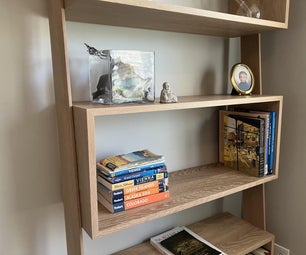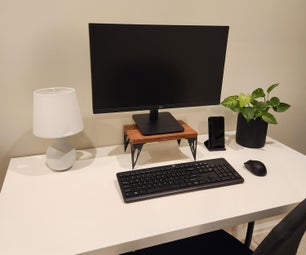Introduction: Zig Zag Structure - Cardboard Chair
I designed a robust chair, it survived many a party (unlike most fragile chairs I've seen) and the principle could be applied to any household furniture.
I've included a step by step of how the basic structure goes together (along with an IKEA type instruction book).
But the best bit is the video of me putting together a whole chair.
- Enjoy
Attachments
Step 1: Basic Structure
This will take you through making the basic structure, you can make whatever you want out of it. The pictures (and notes) do most of the explaining.
The first layer will need 3 strips of card, one longer piece to create the zig-zag and two 'sandwich pieces'
Mark out and score your longest piece at 42mm intervals on each side, make sure to stagger the lines so that when scored it will fold up properly (fig.2)
Take one of your other pieces and mark out and glue it (fig.3)
Now carefully glue down the zig-zag piece, you may need to use pins or tape to hold it while it dries.
After about 10 minutes you can glue the second sandwich piece on top.
Use something heavy to weigh it down and make sure it all sticks. (fig.4)
You can continue to add as many layers as you need (fig.5)
you can make this stuff in big sheets and cut it to the right size later, or you can cut out the shapes you want and build them up layer by layer. (like i did)
Step 2: Simple Chair
The following video is a time lapse of me putting together an entire chair over the period of a couple of days.
The circles were cut with a special circle cutter (like a compass with a scalpel attached) and the tubes are from an A2 plotter roll, and carpet rolls (relevant shops gladly give these away)
The instruction book I made (mock IKEA style) is attached in the intro.
If anyone wants more Info I've got loads more on this project but it would be really boring to post it all here.
More furniture
This was my first attempt and there's loads more I'd like to do with it.
For designing your own furniture here are a few tips.
- Make this material up in large sheets then cut it to shape and cut out holes etc, you'll save a lot of time / hassle.
- Three layers is probably overkill for most applications, two layers will do, maybe re-enforced at certain points.
- If using horizontally (e.g. a tabletop) then cross laminate pieces. i.e glue layers so that one layer of zig-zags
runs at 90° to the one below it.
- This set up can be used for beams / posts but it's not as strong, you're far better off using found tubes (they're free).
Carpet shops have loads and are happy to give them away, large format printing places have tubes from the printer rolls.
Finishing
I left mine raw, but with a coat of acrylic primer and some quick dry-brush work you can get a really good wood effect (see last pic)
or just paint it however you wish.
Note: primer is needed as this is a very absorbent material.
Anything else just ask.














